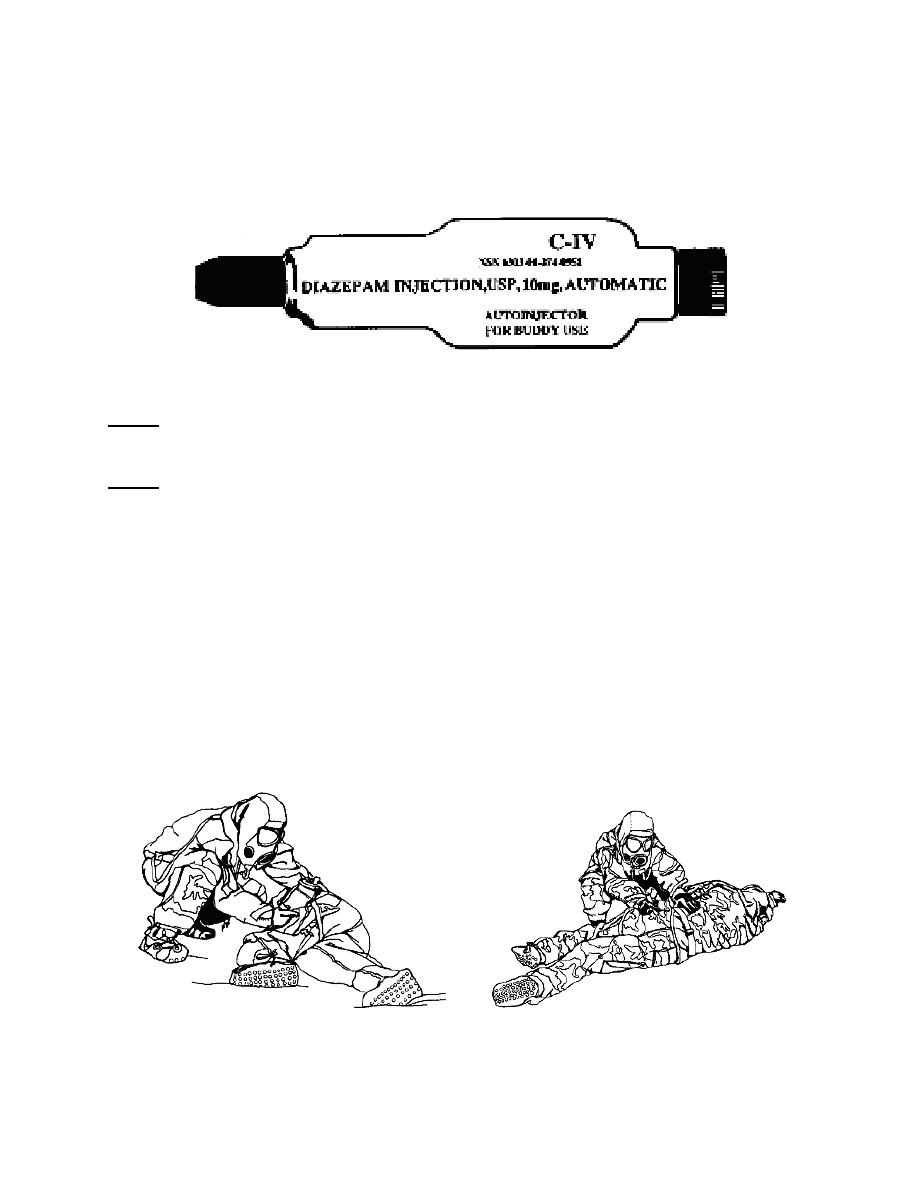
(2) Remove the casualty's three NAAKs and convulsive antidote, nerve
agent (CANA) from his mask carrier or other location and place them on the casualty.
Do not place them on the ground. See figure 8-10 for an illustration of a CANA
autoinjector.
Figure 8-10. Convulsive antidote, nerve agent (CANA) autoinjector
NOTE:
Use the casualty's NAAK and CANA, not yours. You may need your NAAKs
and CANA for yourself at a later time.
NOTE:
If the casualty does not have three sets, check his clothing to see if he has
already administered a set to himself (autoinjectors hooked on pocket flap or
used injectors lying on ground). Also check the ground for unused
autoinjectors (he may have been overcome while attempting to administer
antodote to himself).
(3) Select the injection site. The injection site will normally be on the
casualty's thigh. If the soldier has an extremely thin lateral thigh muscle, administer the
antidote in the upper, outer quadrant of the casualty's buttock to avoid injury to the thigh
bone. Choose the location using the same procedures as for self-aid.
(4) Administer the first NAAK (Mark I or ATNAA) using the same procedures
as used for self-aid (figure 8-11). Be sure the needle does not strike buttons or objects
in the casualty's pocket. Be sure to leave the needle in the injection site for at least 10
seconds.
Figure 8-11. Administering nerve agent antidote to a casualty.
(Left--using the thigh. Right--using the buttock.)
IS0877
8-18



 Previous Page
Previous Page
